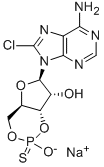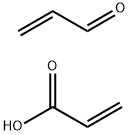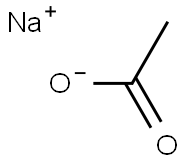Sodium polyacrylate
Synonym(s):2-propenoic acid, homopolymer, sodium salt;PAA;Poly(acrylic acid), partial sodium salt-graft-poly(ethylene oxide);Poly(sodium acrylate);Sodium polyacrylate
- CAS NO.:9003-04-7
- Empirical Formula: C3H4O2
- Molecular Weight: 72.06
- MDL number: MFCD00147949
- EINECS: 999-999-2
- SAFETY DATA SHEET (SDS)
- Update Date: 2025-12-18 17:17:19

What is Sodium polyacrylate ?
Description
Sodium polyacrylate, also known as waterlock, is a sodium salt of poly acrylic acid with the chemical formula [-CH2-CH(COONa)-]n and broad application in consumer products. It has the ability to absorb as much as 200 to 300 times its mass in water. Sodium polyacrylate is anionic polyelectrolytes with negatively charged carboxylic groups in the main chain. While sodium neutralized poly acrylic acids are the most common form used in industry, there are also other salts available including potassium, lithium and ammonium.
Chemical properties
faintly grey crystalline solid
The Uses of Sodium polyacrylate
sodium polyacrylate is a suspending agent, stabilizer, and emulsifier.
The Uses of Sodium polyacrylate
Scale inhibitor, builder in detergents, aid in soap and detergent processing and control of water hardness.
The Uses of Sodium polyacrylate
Absorbent for aqueous-based spills. Retention and slow release aid for water.
Definition
ChEBI: An organic sodium salt which is a macromolecule composed of repeating sodium acrylate units.
What are the applications of Application
Sodium poly acrylate and other derivatives of polyacrylic acid have a wide variety of commercial and industrial uses that include:
Sequestering agents in detergents. ( By binding hard water elements such as calcium and magnesium, the surfactants in detergents work more efficiently.).
General Description
Poly(acrylic acid sodium salt) is a hydrophilic polymer, which can find wide applications in the production of consumer productslike diapers, because of its ability to absorb many more times its mass in water.
Safety Profile
An eye irritant. When heated to decomposition it emits toxic fumes of Na2O.
Purification Methods
Commercial polyacrylamide is first neutralised with an aqueous solution of NaOH, and the polymer is precipitated with acetone. The precipitate is redissolved in a small amount of water and freeze-dried. The polymer is then repeatedly washed with EtOH and water to remove traces of low-molecular-weight material, and finally dried in vacuum at 60o [Vink J Chem Soc, Faraday Trans 1 75 1207 1979]. It has also been dialysed overnight against distilled water, then freeze-dried. Sodium poly( -L-glutamate). Wash it with acetone, dry it in a vacuum, dissolve it in water and precipitate it with isopropanol at 5o. Impurities and low-molecular-weight fractions are removed by dialysis of the aqueous solution for 50hours, followed by ultrafiltration
Properties of Sodium polyacrylate
| Density | 1.32 g/mL at 25 °C |
| refractive index | n |
| storage temp. | 2-8°C |
| form | powder |
| Specific Gravity | 1.23 |
| PH Range | 6 - 9 |
| Hydrolytic Sensitivity | 0: forms stable aqueous solutions |
| Stability: | Stable, but moisture sensitive. |
| InChI | InChI=1S/C3H4O2/c1-2-3(4)5/h2H,1H2,(H,4,5) |
| EPA Substance Registry System | Sodium polyacrylate (9003-04-7) |
Safety information for Sodium polyacrylate
| Signal word | Warning |
| Pictogram(s) |
 Exclamation Mark Irritant GHS07 |
| GHS Hazard Statements |
H319:Serious eye damage/eye irritation |
| Precautionary Statement Codes |
P280:Wear protective gloves/protective clothing/eye protection/face protection. P305+P351+P338:IF IN EYES: Rinse cautiously with water for several minutes. Remove contact lenses, if present and easy to do. Continuerinsing. P337+P313:IF eye irritation persists: Get medical advice/attention. |
Computed Descriptors for Sodium polyacrylate
| InChIKey | NIXOWILDQLNWCW-UHFFFAOYSA-N |
| SMILES | C(=O)(O)C=C |
Sodium polyacrylate manufacturer
Pat Impex
Zeel Product
New Products
4,4-Difluoropiperidine hydrochloride tert-butyl 9-methoxy-3-azaspiro[5.5]undecane-3-carboxylate Indole Methyl Resin N-Isopropylurea N,N-Dicyclohexylcarbodiimide(DCC) MELDRUMS ACID 5-METHYLISOXAZOLE-4-CARBOXYLIC ACID Magnessium Bis glycinate Zinc ascorbate 1-bromo-2-butyne 2-acetamidophenol 9(10H)-anthracenone Erythrosin B, 4-Piperidinopiperidine 2-((4-morpholinophenylamino) (methylthio) methylene) malononitrile 2,4-dihydroxybenzaldehyde 3-(4-morpholinophenylamino)-5-amino-1H-pyrazole-4-carbonitrile Methyl 2-methylquinoline-6-carboxylate 2,6-dichloro-4-nitropyridine 4-Bromo-2-chlorobenzonitrile 2-(benzylamino)acetic acid hydrochloride 4-(tert-Butoxycarbonylamino)but- 2-ynoic acid 3,4-dihydro-2H-benzo[b][1,4]dioxepine 1-Phenyl-1-cycloprppanecarboxylicacidRelated products of tetrahydrofuran








You may like
-
 Polyacrylic acid sodium salt 98%View Details
Polyacrylic acid sodium salt 98%View Details -
 Sodium polyacrylate, 99% CAS 9003-04-7View Details
Sodium polyacrylate, 99% CAS 9003-04-7View Details
9003-04-7 -
 Poly(acrylic acid, sodium salt) solution, average Mw ~15,000, 35 wt.% in H2O CAS 9003-04-7View Details
Poly(acrylic acid, sodium salt) solution, average Mw ~15,000, 35 wt.% in H2O CAS 9003-04-7View Details
9003-04-7 -
 Poly(acrylic acid, sodium salt) solution, average Mw ~1,200, 45 wt.% in H2O CAS 9003-04-7View Details
Poly(acrylic acid, sodium salt) solution, average Mw ~1,200, 45 wt.% in H2O CAS 9003-04-7View Details
9003-04-7 -
 Sodium polyacrylate solution 40% CAS 9003-04-7View Details
Sodium polyacrylate solution 40% CAS 9003-04-7View Details
9003-04-7 -
 Poly(acrylic acid)sodium salt, 99% CAS 9003-04-7View Details
Poly(acrylic acid)sodium salt, 99% CAS 9003-04-7View Details
9003-04-7 -
 Poly(acrylic acid, sodium salt) solution, average Mw ~8,000, 45 wt.% in H2O CAS 9003-04-7View Details
Poly(acrylic acid, sodium salt) solution, average Mw ~8,000, 45 wt.% in H2O CAS 9003-04-7View Details
9003-04-7 -
 Poly Acrylic Acid Sodium Salt, Packaging Details: BottleView Details
Poly Acrylic Acid Sodium Salt, Packaging Details: BottleView Details
9003-04-7
